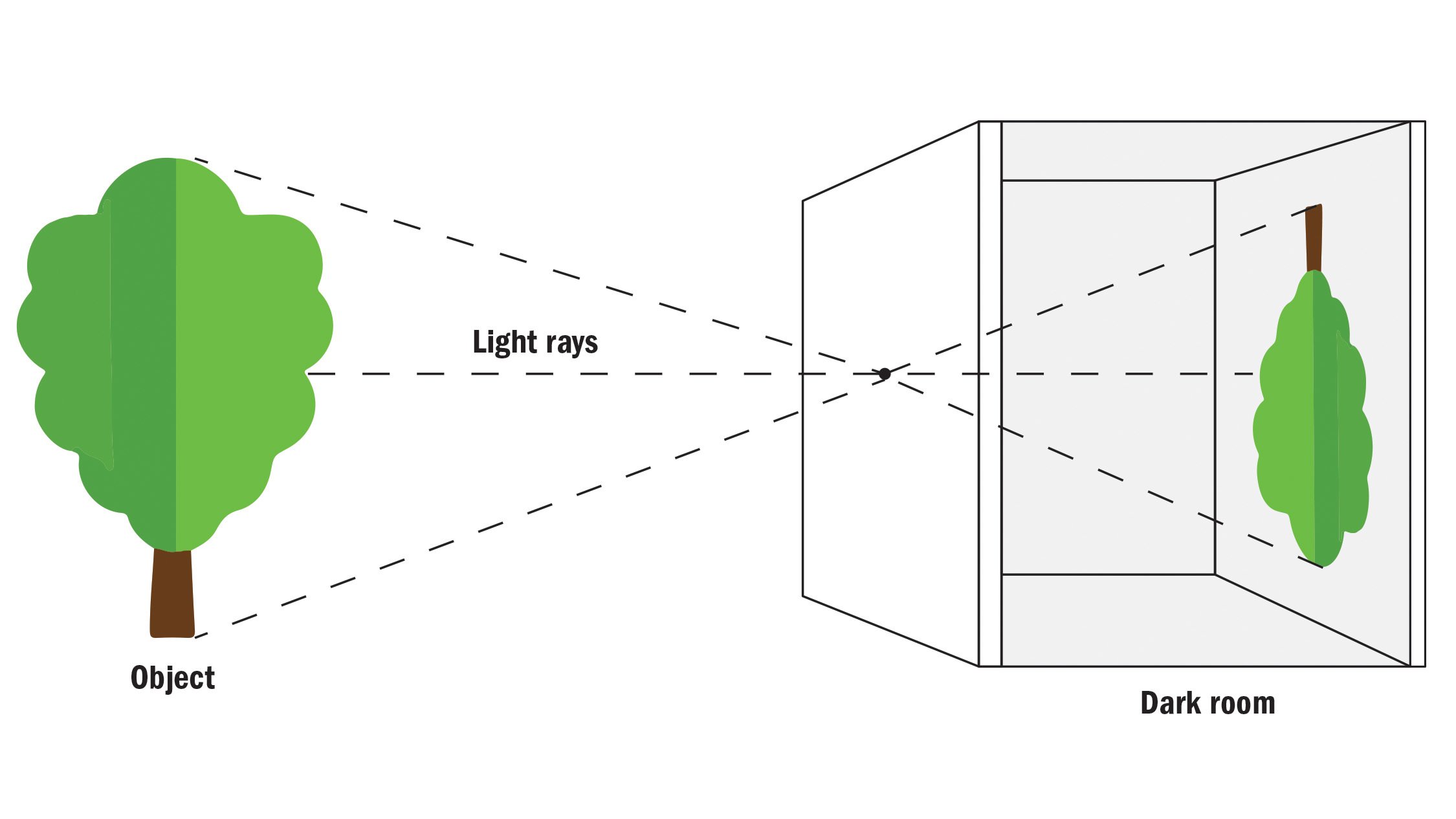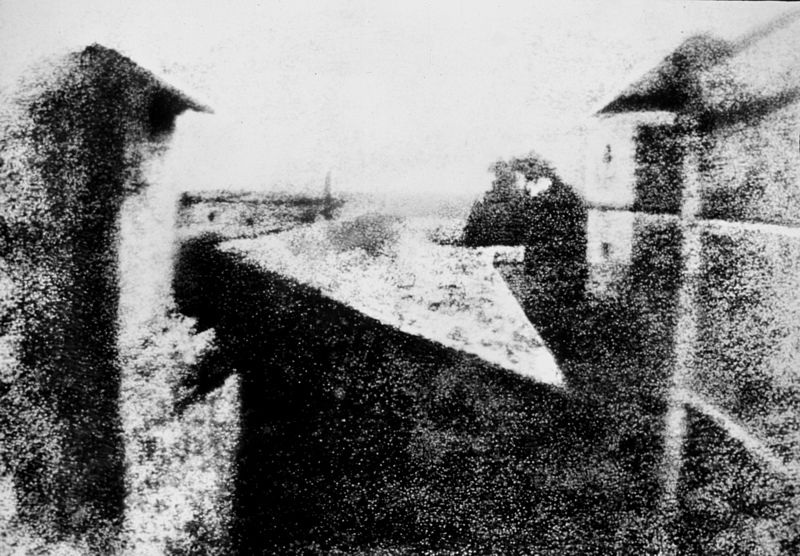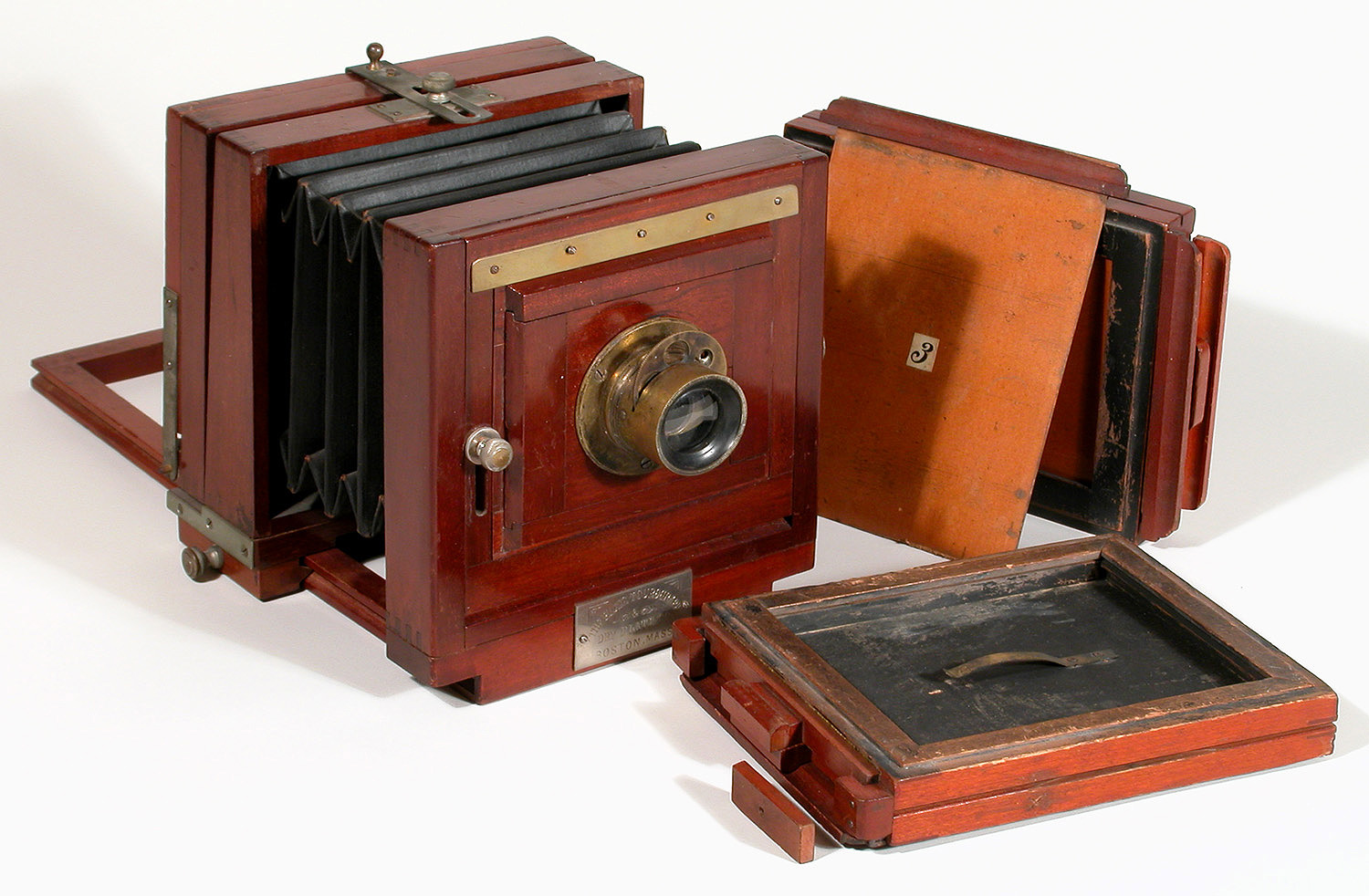Photography, as we know it today, can be done at any type due to the invention of mobile phones but before technology, taking photographs was a lot more work and took a lot more time…
17th Century – Camera Obscura
It first started with the Camera Obscura, which consisted of a dark box, 3 lenses and held a mirror at a 45° angle. It would capture light from the scene and reflect these light rays through a large tube that contained 3 lenses, then using the mirror, would project an upside-down version of the image onto the wooden table.

It’s not clear who invented the camera obscura as there’s evidence that goes back to 400BC where a man, Mo-tzu, discovered how light can project and invert an image, however, the term camera obscura was created by Johannes Kepler in 1604 who used a portable version of the device for astronomy purposes. [The camera obscura was mainly used by artists to compose their paintings which made the device quite popular as it would save them a lot of time painting and was much more efficient.]
19th Century – Nicephore Niepce
Nicephore Niepce was a French inventor who was the first person to ever make a permanent image when he experimented with various light-sensitive substances to create what he called sun drawings. It took many attempts but he didn’t succeed until 1922 when he created a photographic copy of a glass engraving by using bitumen of Judea that hardens when exposed to light then in the year 1827 created the first lasting record of his work that took roughly 8 hours to expose. This led to Niepce teaming up with Louis Daguerre for 4 years, before unfortunately passing away, who improved upon his work and eventually made the Daguerreotype.

19th Century – Louis Daguerre + Daguerreotypes
Louis Daguerre was a French painter and physicist that created the first practical process of photography called the daguerreotype after improving upon Niepce’s work after he passed.
He discovered exposing an idolized silver plate in a camera would create a permanent image if the latent image was developed through exposure to fumes of mercury then fixed by a solution of salt. Daguerre’s process lowered the exposure time from 8 hours to roughly 30 minutes! However, daguerreotypes were expensive as they were highly detailed, heavy and very fragile due to their mirror-like surface which meant only the wealthy could afford them.
Despite their pricing, daguerreotypes were very popular and used for still life, natural phenomena, documentary subjects and most commonly portraits.

19th Century – Henry Fox Talbot
Henry Talbot was an English scientist that created the salt paper and calotype processes which are known as an improved daguerreotype.
The salt paper process involved placing paper into a salt solution that would later be dried before one side of the paper got coated in a solution of silver nitrate, creating a light-sensitive silver nitrate that would darken when exposed to light. Objects would be placed on the paper or the image from a camera obscura would be used in order for the photo to be made.

The Calotype process used a paper negative to make a softer version of the daguerreotype which makes it possible to make multiple copies as a negative is produced.

19th Century – Richard Maddox
Richard Maddox was an English photographer and physician who created lightweight gelatin negative plates in 1871 which meant photographers didn’t have to make their own emulsions in a dark room but could instead use commercial dry plates off the shelf which meant negatives didn’t have to be created immediately. This also meant cameras were now small enough to be handheld which made photography more convenient than ever before.

19th-20th Century – George Eastman + Kodak + Brownie
George Eastman was an American entrepreneur and inventor who managed to perfect the making of dry plates and introduced the Kodak camera and the Brownie to the world along with the use of film.
The Kodak was the first camera that could be used to create amateur photography as it was a small handheld box that was sold with film sealed inside so that it could be mailed back to the Rochester in order for the film to be processed, printed and reloaded free of charge which created the company’s slogan ‘you press the button, we do the rest’.
After 8 years, Eastman released a cheaper version of the Kodak called the Brownie which was aimed towards children and sold for 1 dollar. The main difference between the Kodak and Brownie was that the film could be removed in the brownie which meant it didn’t have to be sent back in order for their photos to be processed.

